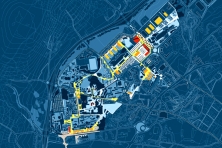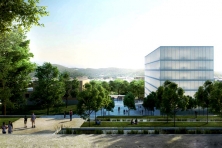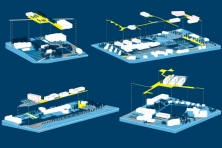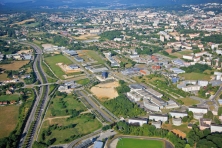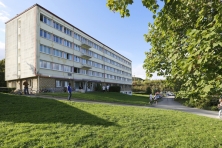MACRO-CHIP Urbain
Besançon (FR) - Special Mention
TEAM DATA
Team Representative: Francesco Rizzi (IT) – architect
Contributors: Maria Gloria Ghielmetti (IT), Francesco Pusterla (IT), Vitor Colombo Pessoa (CH), Lisa Troiano (IT) – architects; Jacobus Macco (NL) – landscape architect; Stefano Giorgio Banis (IT) – urbanist
Viale Lecco, 22100 Como (IT)
+39 347 94 114 78 – arch.f.rizzi@gmail.com
See the complete listing of portraits here
See the site page here

F. Rizzi, M.G. Ghielmetti, F. Pusterla, V. Colombo Pessoa, L. Troiano, J. Macco & S.G. Banis
INTERVIEW
Click on the images to enlarge
1. How did you form the team for the competition?
We are an interdisciplinary group of architects, urbanists and landscape architects involved in different professional experience on the design at various scale - from the territory to the executive scale - in Italy and Switzerland.
2. How do you define the main issue of your project, and how did you answer on this session main topic: the place of productive activities within the city?
Besançon, since the XIX century, has faced the challenge to reorient the production of watchmaking, becoming an important European centre of microtechnology and a clear example of a strong, renovating tradition over time. The proposal Macro-Chip Urbain inserts the project site into a large-scale consideration, showing the opportunity to include it in a long-term growth scenario together with the productive areas around it, thus fostering spatial and economical interactions between academic, scientific and industrial actors.
3. How did this issue and the questions raised by the site mutation meet?
The regional morphological condition is reinforced by the project. The morainic hills where the Citadel has been built together with the linear defence system has been considered as a reference to design the linear hill (of the competition site). In the project the Technopoles and the university campus become part of a system of referential buildings and public spaces, constituting a sequence of productive Milestones. Those places benefit from an intermodal integration to the new public transport line (TCSP). To redefine the quality of the landscape, productive and experimental tree nurseries are designed. The landscape becomes active in order to give identity and quality to open space.
4. Have you treated this issue previously? What were the reference projects that inspired yours?
Similar projects have been developed professionally (as academic researcher, teaching assistant or designer) by some of us during the last 5/7 years. Territorial project and a multiscale approach have a value in our education and daily job. As reference we indicate 3 projects (in Switzerland and in France) on similar topic: industrial territorial systems; big scale landscape definition; hierarchy of the mobility system in urban contest. Industrial area Pian Scairolo (CH) is a project developed by Michele Arnaboldi architetti in 2008; it defines a transformation strategy of an important productive area. Industrial Parc Laveggio (CH) is a territorial studio developed by Laboratorio Ticino, international research institute on the territorial project of Accademia di architettura di Mendrisio, USI. “Marché de définition pour l'aménagement du secteur Izard - Launaguet à Toulouse” is a project of Agence Obras from 2008 that investigate the contemporary topic of the relation between nature and city.
5. Urban-architectural projects like the ones in Europan can only be implemented together with the actors through a negotiated process and in time. How did you consider this issue in your project?
The strongest contribution of the project is a concrete scenario showing the quality and identity of specific places. Starting from this easily understandable vision, the definition of private and public needs can be lightly negotiated controlling the results on the urban contest. Macro-Chip Urbain proposes itself as a flexible instrument to orientate local modifications that participate to a global transformation of Besançon.
6. Is it the first time you have been awarded a prize at Europan? How could this help you in your professional career?
It is our first participation. Having worked in the Italian and the Swiss contests, the confrontation with the territorial challenge in another country like France is really enriching.
